Recycled PET Sandwich Cores, Waste-Derived Carbon Additive, and Cure-Rate Control: FTIR/SEM Study of Flexural Performance in Flax Fiber-Reinforced Composites
Abstract
1. Introduction
2. Methodology
2.1. Materials and Fabrications
2.2. Experimental Groups
2.2.1. Experimental Group 1: Matrix Curing Rate Control
- Fast Curing Condition: The composite was cured by applying a rapid heating rate of 5 °C/min from room temperature to 100 °C, which is the temperature at which the epoxy system achieves complete crosslinking. This temperature was maintained for 3 h, as illustrated in Figure 3. The purpose of this curing condition was to accelerate the polymerization process and promote the development of a fully crosslinked polymer network. Specimens prepared under this condition served as the baseline for comparison with the slow curing condition.
- Slow Curing Condition: In this condition, the composite was subjected to a slower heating rate of 1 °C/min starting from room temperature up to 60 °C. The temperature was held at this point for 1 h to lower the resin viscosity, thereby facilitating more uniform wetting and distribution throughout the fiber architecture. After the hold, the temperature was increased at the same rate to reach 100 °C and held for 3 h to complete the curing process, as shown in Figure 4.
2.2.2. Experimental Group 2: Incorporation of Additives
2.2.3. Experimental Group 3: Sandwich Composite
2.3. Test Configuration and Specimen Identification
3. Experimental Result and Analysis
3.1. Effect of Resin Curing Control
3.2. Effect of FCB Additive Incorporation
3.3. Effect of Sandwich Structure Design
3.4. Overall Improvement Outcomes
4. Conclusions and Suggestions
4.1. Conclusions
4.2. Toward Sustainable Composites
4.3. Application Recommendations
4.4. Suggestions for Future Work
Supplementary Materials
Author Contributions
Funding
Data Availability Statement
Acknowledgments
Conflicts of Interest
References
- Prasad, V.; Alliyankal Vijayakumar, A.; Jose, T.; George, S.C. A comprehensive review of sustainability in natural-fiber-reinforced polymers. Sustainability 2024, 16, 1223. [Google Scholar] [CrossRef]
- Faheed, N.K. Advantages of natural fiber composites for biomedical applications: A review of recent advances. Inst. Ion. 2024, 7, 63–75. [Google Scholar] [CrossRef]
- Phunpeng, V.; Boransan, W.; Horpibulsuk, S. Comprehensive analysis of in-plane tensile characteristics of hybrid composite using finite element method. J. Eng. Res. 2025, 13, 1294–1306. [Google Scholar] [CrossRef]
- Koronis, G.; Silva, A.; Ong, M. Comparison of structural performance and environmental impact of epoxy composites modified by glass and flax fabrics. J. Compos. Sci. 2022, 6, 284. [Google Scholar] [CrossRef]
- Elfaleh, I.; Abbassi, F.; Habibi, M.; Ahmad, F.; Guedri, M.; Nasri, M.; Garnier, C. A comprehensive review of natural fibers and their composites: An eco-friendly alternative to conventional materials. Results Eng. 2023, 19, 101271. [Google Scholar] [CrossRef]
- Przybek, A.; Łach, M. Research on the physical properties of an eco-friendly layered geopolymer composite. Materials 2024, 17, 4937. [Google Scholar] [CrossRef]
- Vishwash, B.; Shivakumar, N.D.; Sachidananda, K.B. A brief review on natural fiber reinforced composite sandwich structures. Next Res. 2025, 2, 100474. [Google Scholar] [CrossRef]
- Hiremath, V.S.; Reddy, D.M.; Reddy Mutra, R.; Sanjeev, A.; Dhilipkumar, T.; Naveen, J. Thermal degradation and fire-retardant behaviour of natural fibre reinforced polymeric composites: A comprehensive review. J. Mater. Res. Technol. 2024, 30, 4053–4063. [Google Scholar] [CrossRef]
- McKay, I.; Vargas, J.; Yang, L.; Felfel, R.M. A review of natural fibres and biopolymer composites: Progress, limitations, and enhancement strategies. Materials 2024, 17, 4878. [Google Scholar] [CrossRef] [PubMed]
- Stochioiu, C.; Ciolcă, M.; Deca, A.L. Mechanical characterization of flax and hemp fibers cultivated in Romania. Materials 2024, 17, 4871. [Google Scholar] [CrossRef]
- Parodo, G.; Sorrentino, L.; Turchetta, S.; Moffa, G. Manufacturing of sustainable composite materials: The challenge of flax fiber and polypropylene. Materials 2024, 17, 4768. [Google Scholar] [CrossRef] [PubMed]
- Khatri, H.; Naveen, J.; Jawaid, M.; Jayakrishna, K.; Norrrahim, M.N.F.; Rashedi, A. Potential of natural fiber-based polymeric composites for cleaner automotive component production: A comprehensive review. J. Mater. Res. Technol. 2023, 25, 1086–1104. [Google Scholar]
- Lopes, L.; Dauari, H.; Mendonça, P.; Almeida, M. Marine plastic waste in construction: A systematic review of applications in the built environment. Polymers 2025, 17, 1729. [Google Scholar] [CrossRef]
- Ares-Elejoste, P.; Seoane-Rivero, R.; Gandarias, I.; Ballestero, J.; Alonso-Amondarain, A.L. Effect of bio-based flame retardants in sustainable epoxy systems for the development of composite materials. Polymers 2025, 17, 2001. [Google Scholar] [CrossRef]
- Shembekar, A.P.; Yu, J.; Zhang, M.; Griffin, C.; Ray, D. Recycling continuous glass fibre-reinforced polyamide 6 laminates via compression moulding. Polymers 2025, 17, 2160. [Google Scholar] [CrossRef]
- Gao, Z.; Sun, J.; Wei, Z.; Yu, F.; Qiu, Z.; Xiao, Z.; Wang, Y. Epoxy–aminated lignin impregnation combined with densification for enhanced mechanical properties and deformation fixation of wood. Polymers 2025, 17, 1406. [Google Scholar] [CrossRef] [PubMed]
- Yao, L.; Yao, L.; Song, F.; Wei, M.; Wang, A.; Xu, X.; Chen, Z.; Rong, R.; Jiang, P. Flame-retardant wood scrimber/plywood composites: Preparation, characterization, and enhanced structural performance. Polymers 2025, 17, 2556. [Google Scholar] [CrossRef] [PubMed]
- Arvizu-Montes, A.; Alcivar-Bastidas, S.; Martínez-Echevarría, M.J. Experimental study on the effect of abaca fibers on reinforced concrete: Evaluation of workability, mechanical, and durability-related properties. Fibers 2025, 13, 75. [Google Scholar] [CrossRef]
- Kovuru, R.; Schuster, J. Enhancing mechanical properties of hemp and sisal fiber-reinforced composites through alkali and fungal treatments for sustainable applications. J. Manuf. Mater. Process. 2025, 9, 191. [Google Scholar] [CrossRef]
- Shettigar, S.; Gowrishankar, M.C.; Shettar, M. Review on aging behavior and durability enhancement of bamboo fiber-reinforced polymer composites. Molecules 2025, 30, 3062. [Google Scholar] [CrossRef]
- Lee, C.H.; Khalina, A.; Lee, S.H. Importance of interfacial adhesion condition on characterization of plant-fiber-reinforced polymer composites: A review. Polymers 2021, 13, 438. [Google Scholar]
- Lei, L.; Zhao, B.; Cheng, Z.; Wei, Z.; Ji, C.; Zhu, Y.; Yu, T.; Li, Y.; Fan, J. Improving the interfacial adhesion and mechanical properties of flax fiber reinforced composite through fiber modification and layered structure. Ind. Crops Prod. 2024, 221, 119305. [Google Scholar]
- Marchi, B.Z.; Silveira, P.H.P.M.d.; Bezerra, W.B.A.; Nascimento, L.F.C.; Lopes, F.P.D.; Candido, V.S.; Silva, A.C.R.d.; Monteiro, S.N. Ballistic performance, thermal and chemical characterization of Ubim fiber (Geonoma baculifera) reinforced epoxy matrix composites. Polymers 2023, 15, 3220. [Google Scholar] [CrossRef] [PubMed]
- Adamu, M.; Labib, W.A.; Ibrahim, Y.E.; Alanazi, H. Mechanical behavior and durability performance of concrete reinforced with hybrid date palm and polypropylene polymer fibers. Polymers 2025, 17, 1350. [Google Scholar] [CrossRef]
- Polla, A.; Frulla, G.; Cestino, E.; Das, R.; Marzocca, P. Coupled thermo-mechanical numerical modeling of CFRP panel under high-velocity impact. Aerospace 2023, 10, 367. [Google Scholar]
- Dal Pont, B.; Aliotta, L.; Tognarelli, E.; Gigante, V.; Lazzeri, A. Toughened vinyl ester resin reinforced with natural flax fabrics. Appl. Sci. 2024, 14, 10459. [Google Scholar] [CrossRef]
- Maiti, S.; Islam, M.R.; Uddin, M.A.; Afroj, S.; Eichhorn, S.J.; Karim, N. Sustainable fiber-reinforced composites: A review. Adv. Sustain. Syst. 2022, 6, 2200258. [Google Scholar]
- Shams, A.T.; Papon, E.A.; Haque, A. The effects of fiber concentration, orientation, and aspect ratio on the frontal polymerization of short carbon-fiber-reinforced composites: A numerical study. J. Compos. Sci. 2025, 9, 307. [Google Scholar]
- Dragasiute, K.; Monastyreckis, G.; Zeleniakiene, D. Electrically conductive nanoparticle-enhanced epoxy adhesives for localised Joule heating-based curing in composite bonding. Polymers 2025, 17, 1176. [Google Scholar] [CrossRef]
- Adhikari, S.; Myers, B.M.; Tuck, B.L.; Dawson, C.; Cipriano, J.R.; Ahlert, J.F.; Thwala, M.; Griffin, M.A.; Yadak, O.; Alfailakawi, O.A.; et al. Scanning electron microscopy of carbon nanotube–epoxy interfaces: Correlating morphology to sulfate exposure. J. Compos. Sci. 2025, 9, 392. [Google Scholar] [CrossRef]
- Kim, H.B.; Oh, S.H.; Jeong, Y.G.; Kim, H.S.; Park, B.G.; Park, J.S. Effects of heat treatment on the microstructure and flexural mechanical properties of carbon fiber reinforced composite cured by electron beam. Mater. Today Commun. 2023, 37, 107181. [Google Scholar] [CrossRef]
- Bessa, W.; Trache, D.; Moulai, S.A.; Tarchoun, A.F.; Abdelaziz, A.; Hamidon, T.S.; Hussin, M.H. Polybenzoxazine/epoxy copolymer reinforced with phosphorylated microcrystalline cellulose: Curing behavior, thermal, and flame retardancy properties. Fibers 2024, 12, 61. [Google Scholar] [CrossRef]
- Fiore, V.; Orlando, V.; Sanfilippo, C.; Badagliacco, D.; Valenza, A. Effect of silane coupling treatment on the adhesion between polyamide and epoxy-based composites reinforced with carbon fibers. Fibers 2020, 8, 48. [Google Scholar] [CrossRef]
- Dai, Y.; Chong, J.; Chen, L.; Tang, Y. Evaluating carbon fibre-reinforced polymer composite helical spring performances under various compression angles. Fibers 2025, 13, 65. [Google Scholar] [CrossRef]
- Oladele, I.O.; Ayanleye, O.T.; Adediran, A.A.; Makinde-Isola, B.A.; Taiwo, A.S.; Akinlabi, E.T. Characterization of wear and physical properties of pawpaw-glass fiber hybrid reinforced epoxy composites for structural application. Fibers 2020, 8, 44. [Google Scholar]
- Supriya, J.P.; Shetty, R.; Shetty, S.; Nayak, R.; Hegde, A. Delamination and its morphological study on Hibiscus rosa-sinensis/carbon nanotubes/epoxy-based hybrid composites during abrasive water-jet machining using statistical optimization techniques. J. Compos. Sci. 2025, 9, 509. [Google Scholar]
- Al Mamari, S.S.; Julai, S.; Sabri, M.F.M.; Wilson Annamal, L.A.; Shahabaz, S.M. Effect of nano ferrochrome slag-infused polymer matrix on mechanical properties of bidirectional carbon fiber-reinforced polymer composite. Polymers 2025, 17, 2527. [Google Scholar] [CrossRef]
- Saravanakumar, K.; Arumugam, V.; Souhith, R.; Santulli, C. Influence of milled glass fiber fillers on mode I & mode II interlaminar fracture toughness of epoxy resin for fabrication of glass/epoxy composites. Fibers 2020, 8, 36. [Google Scholar] [CrossRef]
- Zhang, J.; Zhang, Z.; Huang, R.; Tan, L. Advances in toughening modification methods for epoxy resins: A comprehensive review. Polymers 2025, 17, 1288. [Google Scholar] [CrossRef]
- Ouyang, X.; Wang, X.; Chen, Q.; Ge, G.; Liu, D.; Lin, K.; Liu, Y.; Zong, Y.; Duan, S.; Niu, K. The influence of matrix resin toughening on the compressive properties of carbon fiber composites. Polymers 2024, 16, 3328. [Google Scholar] [CrossRef]
- Kıstak, C.; Yanen, C.; Aydoğmuş, E. Advanced sustainable epoxy composites from biogenic fillers: Mechanical and thermal characterization of seashell-reinforced composites. Appl. Sci. 2025, 15, 8498. [Google Scholar] [CrossRef]
- Navin, M.; Ramakrishnan, T.; Balaji, D.; Bhuvaneswari, V. CRITIC–EDAS approach for evaluating mechanical properties of flax/vetiver/MFF hybrid composites. Polymers 2025, 17, 1790. [Google Scholar] [CrossRef]
- Cavalcanti, W.M.; de Oliveira, L.S.; Maziero, R.; Campos Rubio, J.C. The feasibility of producing particleboards with waste wood from civil construction and epoxidized waste cooking oils. Fibers 2022, 10, 62. [Google Scholar] [CrossRef]
- Islam, A.; Ferdous, W.; Burey, P.; Nahar, K.; Yan, L.; Manalo, A. Polymer composite sandwich panels composed of hemp and plastic skins and composite wood, recycled plastic, and Styrofoam cores. Polymers 2025, 17, 1359. [Google Scholar] [CrossRef] [PubMed]
- Gomes, S.; Santos, P.; Lima, T.M. Development of sustainable composite sandwich with wood waste and natural fibers for circular economy applications. Recycling 2025, 10, 131. [Google Scholar] [CrossRef]
- Alsubari, S.; Zuhri, M.Y.M.; Sapuan, S.M.; Ishak, M.R.; Ilyas, R.A.; Asyraf, M.R.M. Potential of natural fiber reinforced polymer composites in sandwich structures: A review on its mechanical properties. Polymers 2021, 13, 423. [Google Scholar] [CrossRef] [PubMed]
- Lascano, D.; Quiles-Carrillo, L.; Torres-Giner, S.; Boronat, T.; Montanes, N. Optimization of the curing and post-curing conditions for the manufacturing of partially bio-based epoxy resins with improved toughness. Polymers 2019, 11, 1354. [Google Scholar] [CrossRef]
- ASTM D790; Standard Test Methods for Flexural Properties of Unreinforced and Reinforced Plastics and Electrical Insulating Materials. ASTM International: West Conshohocken, PA, USA, 2015.
- ASTM C393; Standard Test Method for Core Shear Properties of Sandwich Constructions by Beam Flexure. ASTM International: West Conshohocken, PA, USA, 2006.



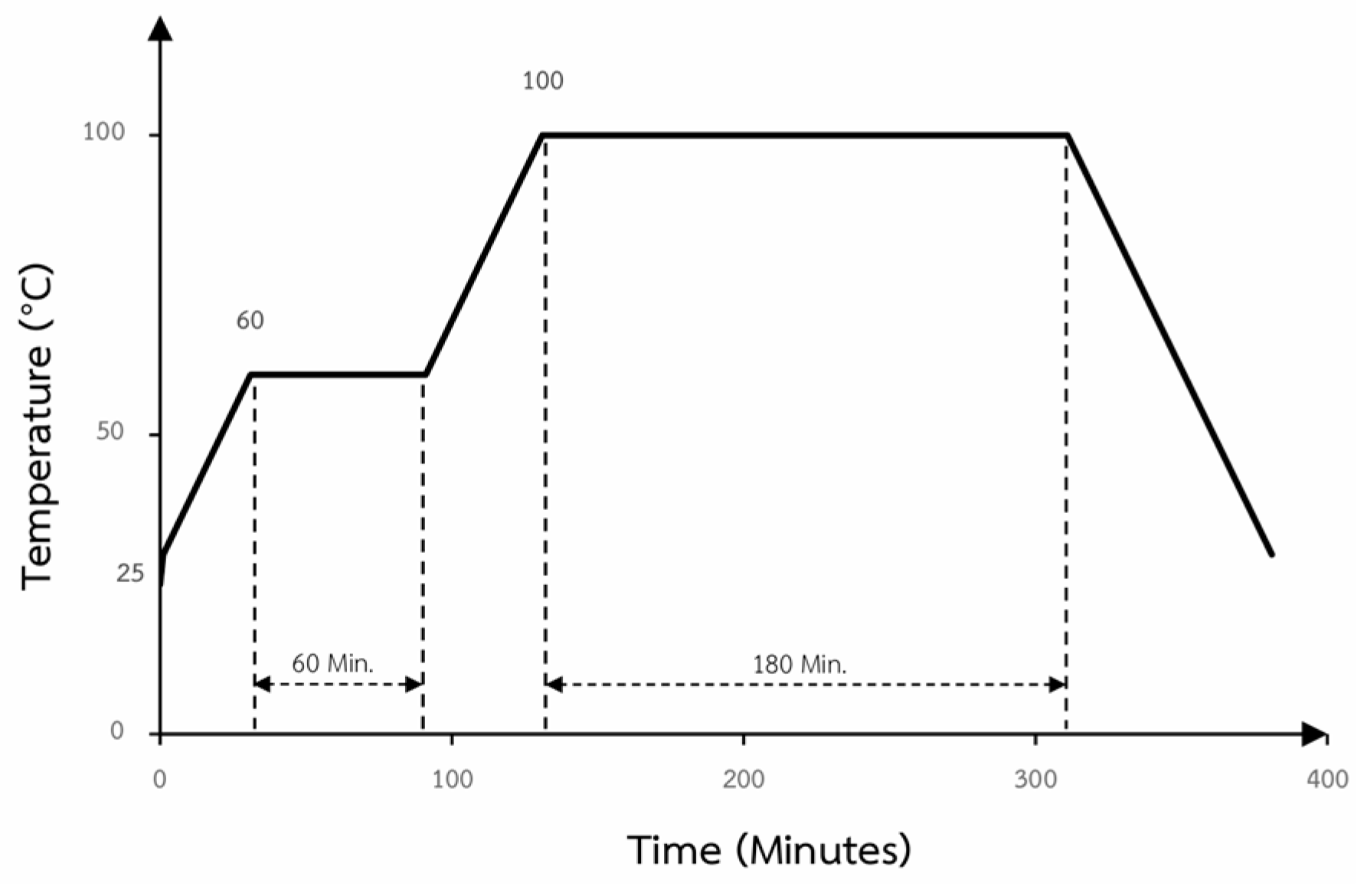
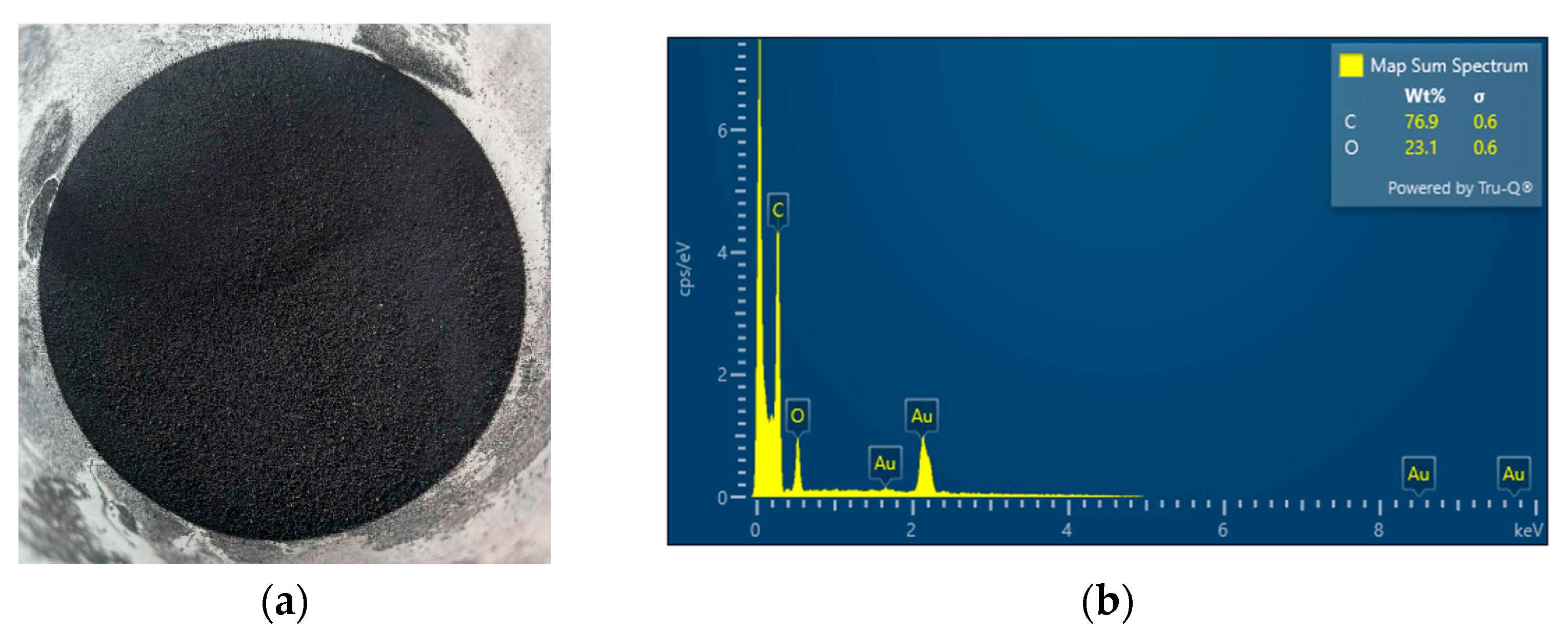
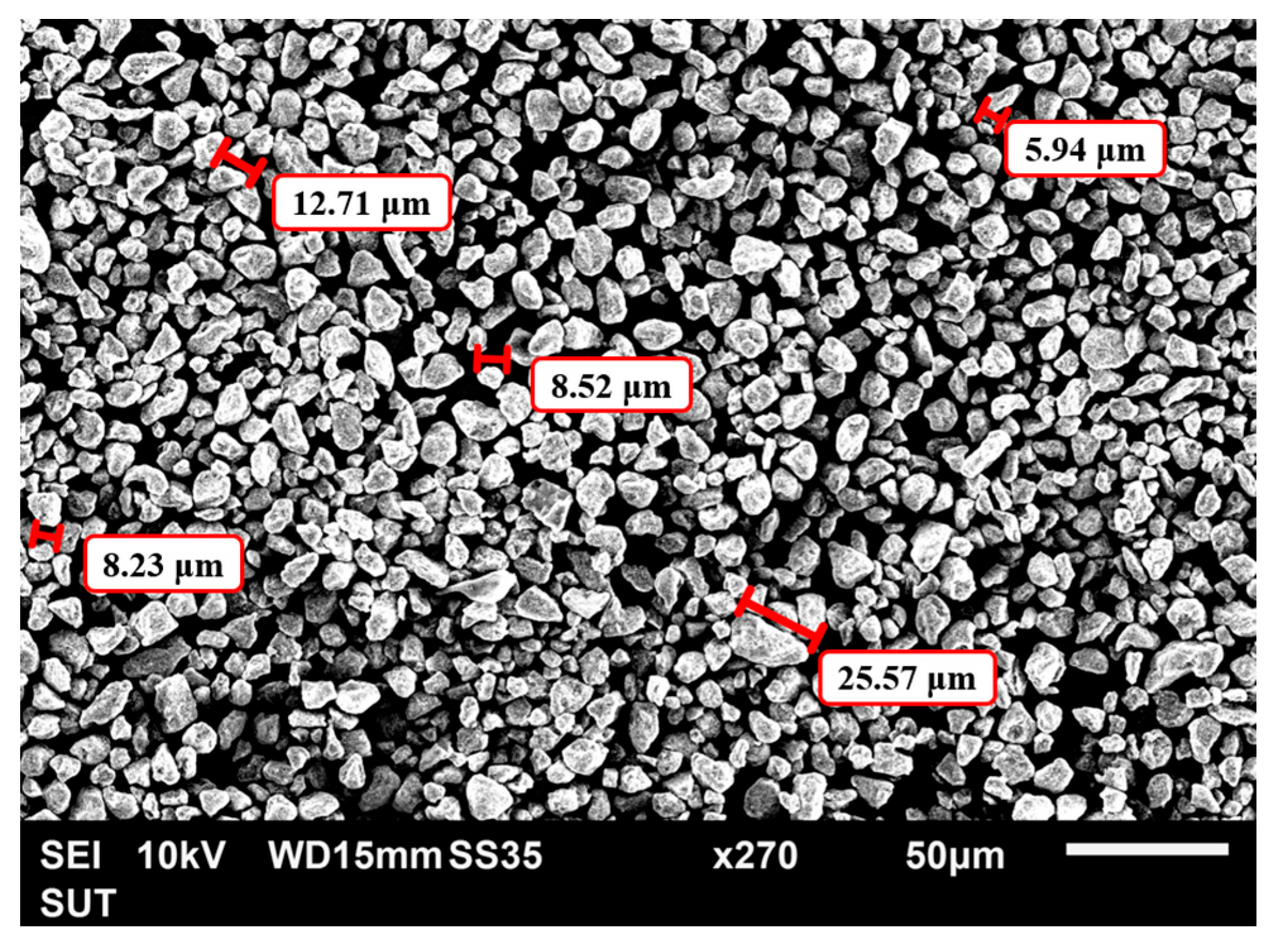

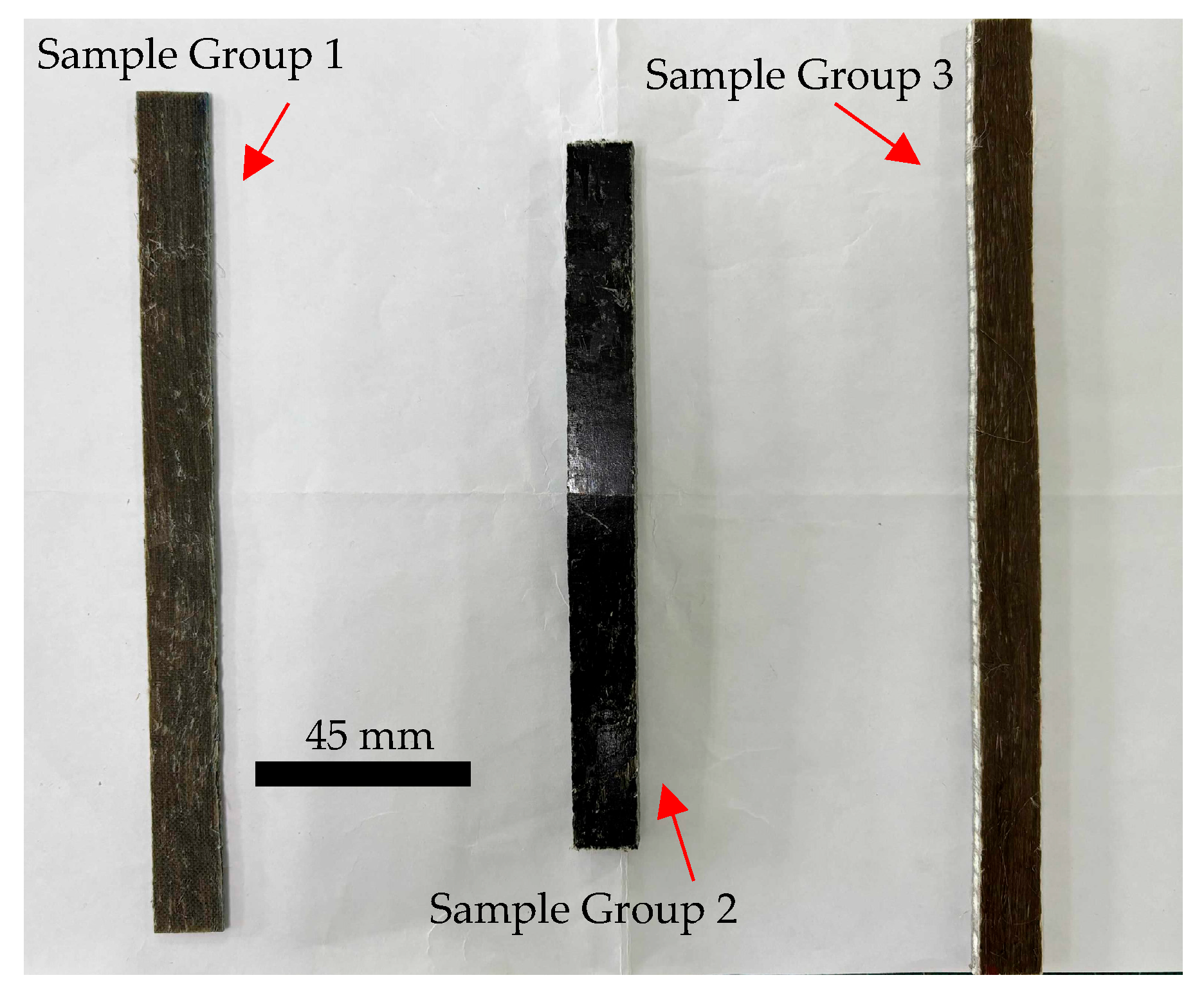

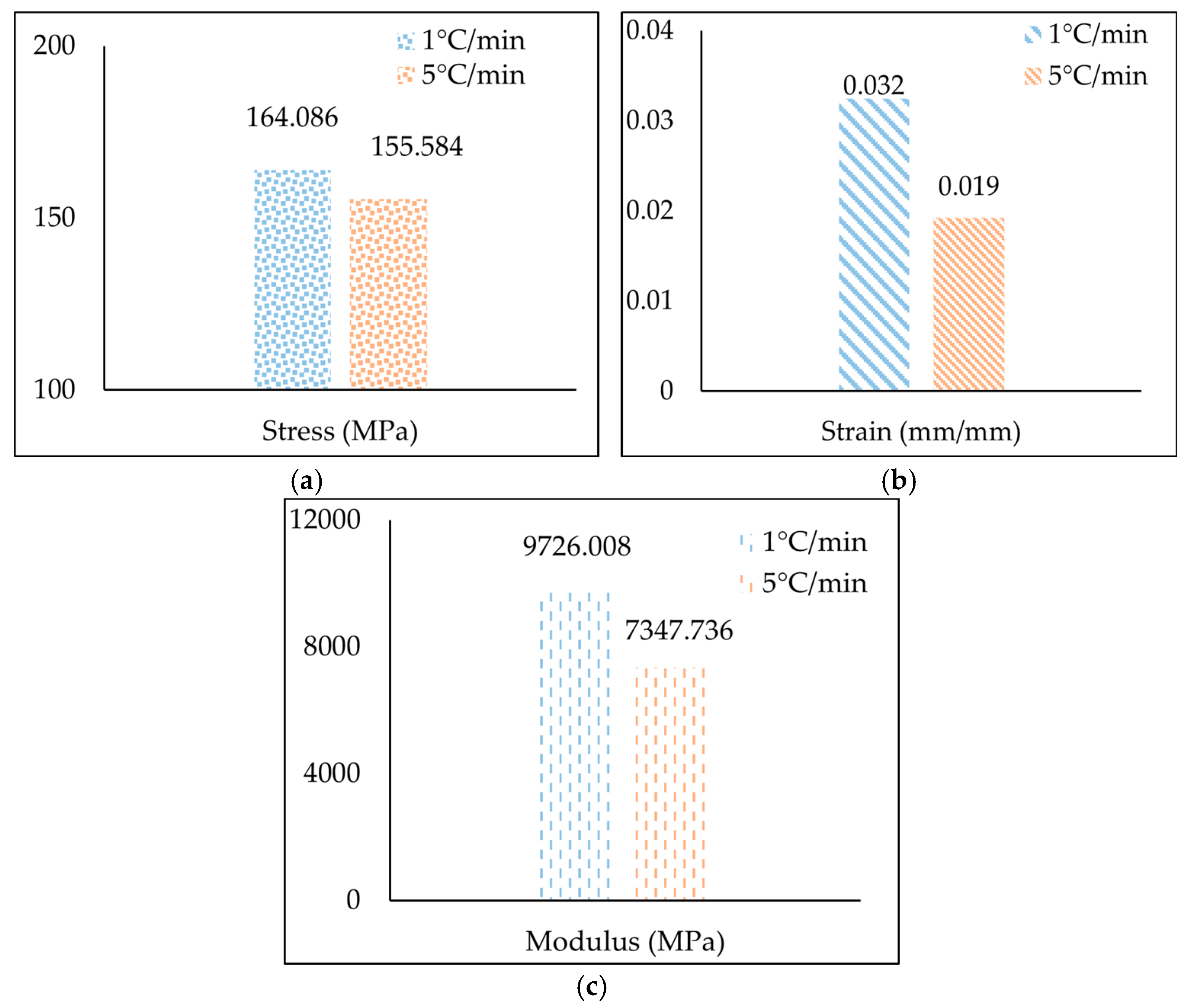

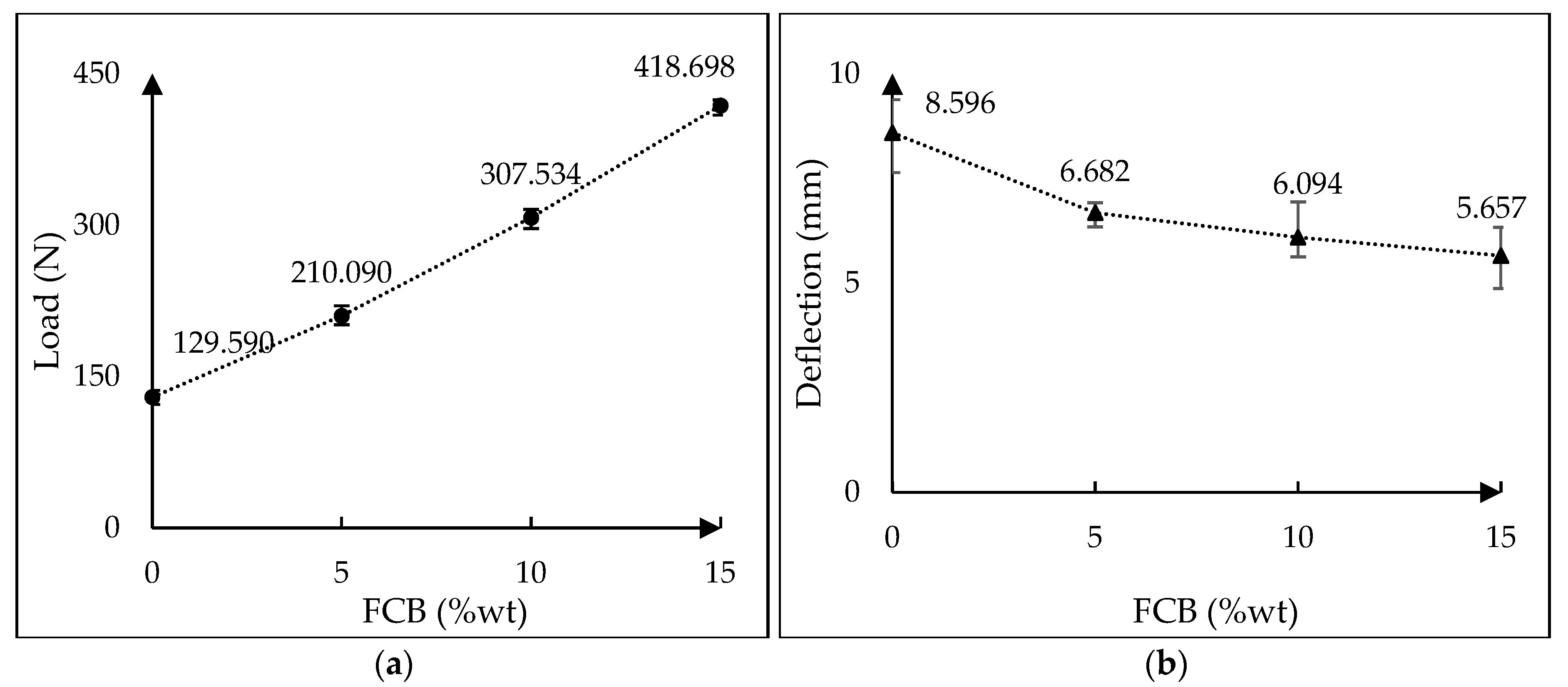


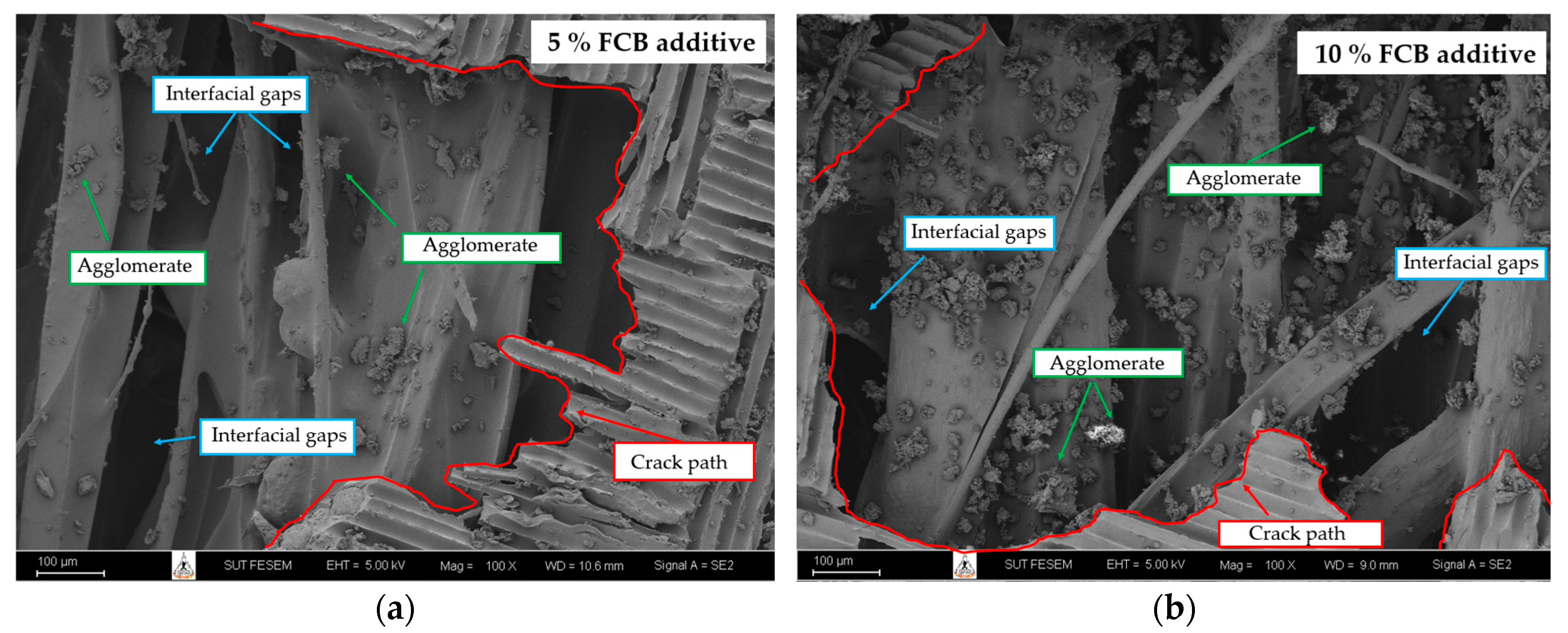
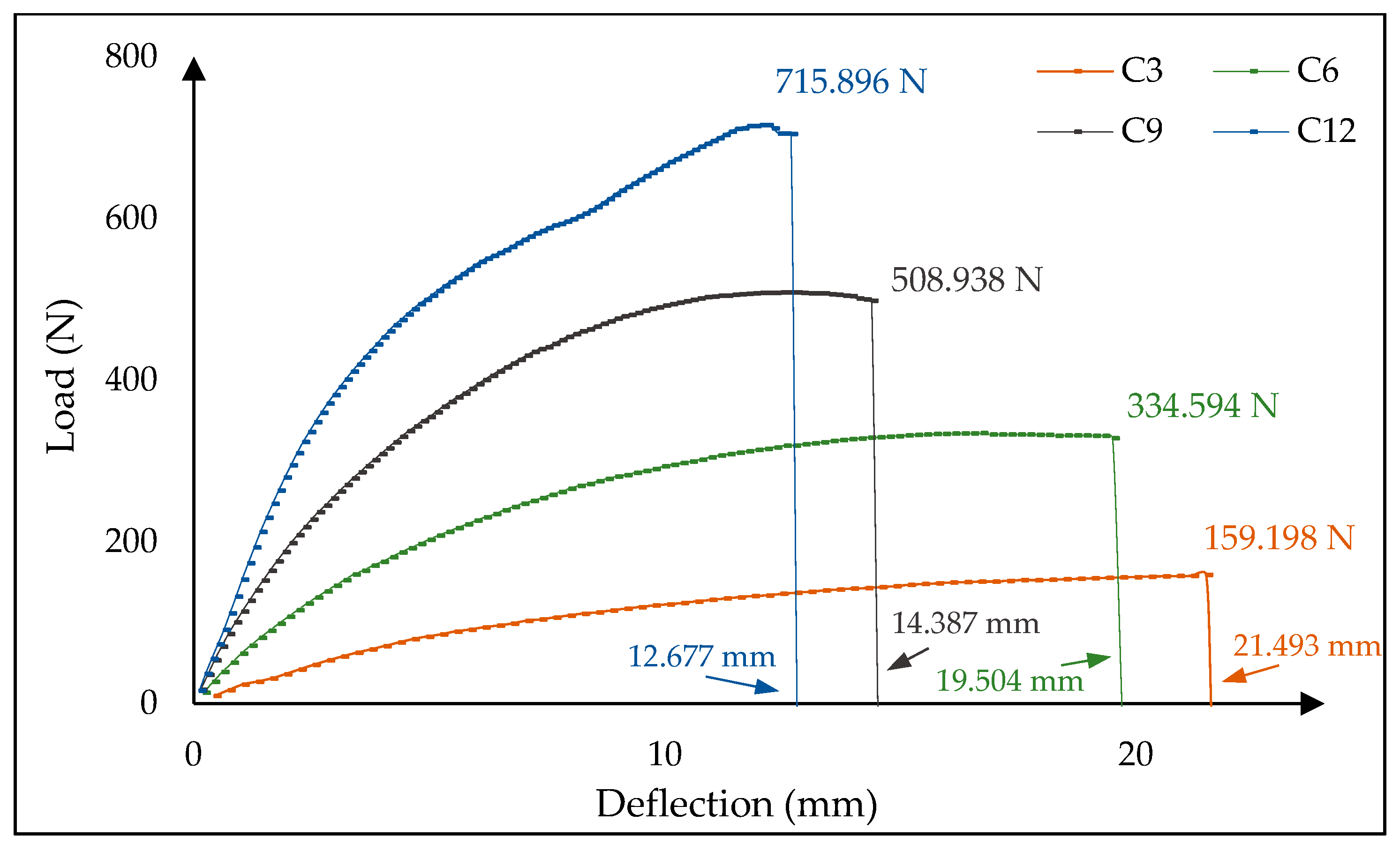
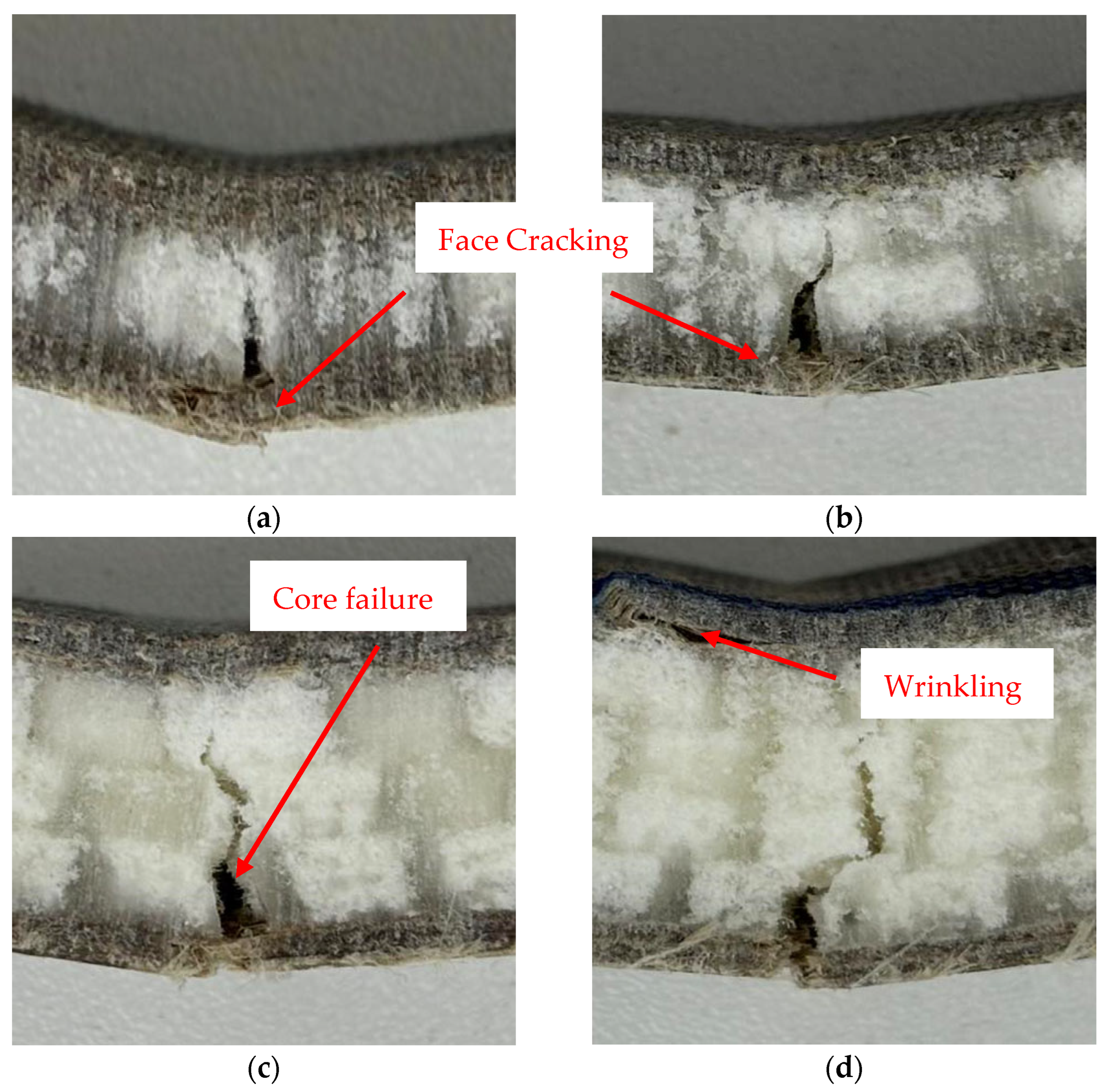
| Experiment Group | Condition | Name | Width (mm) | Thickness (mm) |
|---|---|---|---|---|
| Resin Curing Control | Heat rate | |||
| 5 °C/min | HR5 | 16.1 ± 0.2 | 1.7 ± 0.2 | |
| 1 °C/min | HR1 | 15.9 ± 0.2 | 1.5 ± 0.2 | |
| FCB Addition | % Additive | |||
| 0% | FCB0 | 15.02 ± 0.2 | 4.52 ± 0.2 | |
| 5% | FCB5 | 5.23 ± 0.2 | ||
| 10% | FCB10 | 6.21 ± 0.2 | ||
| 15% | FCB15 | 6.98 ± 0.2 | ||
| Sandwich Structure | Core Thickness | |||
| 3 mm | C3 | 15.02 ± 0.2 | 5.02 ± 0.2 | |
| 6 mm | C6 | 7.72 ± 0.2 | ||
| 9 mm | C9 | 10.33 ± 0.2 | ||
| 12 mm | C12 | 12.21 ± 0.2 |
Disclaimer/Publisher’s Note: The statements, opinions and data contained in all publications are solely those of the individual author(s) and contributor(s) and not of MDPI and/or the editor(s). MDPI and/or the editor(s) disclaim responsibility for any injury to people or property resulting from any ideas, methods, instructions or products referred to in the content. |
© 2025 by the authors. Licensee MDPI, Basel, Switzerland. This article is an open access article distributed under the terms and conditions of the Creative Commons Attribution (CC BY) license (https://creativecommons.org/licenses/by/4.0/).
Share and Cite
Phunpeng, V.; Khodcharad, K.; Boransan, W. Recycled PET Sandwich Cores, Waste-Derived Carbon Additive, and Cure-Rate Control: FTIR/SEM Study of Flexural Performance in Flax Fiber-Reinforced Composites. Fibers 2025, 13, 142. https://doi.org/10.3390/fib13100142
Phunpeng V, Khodcharad K, Boransan W. Recycled PET Sandwich Cores, Waste-Derived Carbon Additive, and Cure-Rate Control: FTIR/SEM Study of Flexural Performance in Flax Fiber-Reinforced Composites. Fibers. 2025; 13(10):142. https://doi.org/10.3390/fib13100142
Chicago/Turabian StylePhunpeng, Veena, Kitsana Khodcharad, and Wipada Boransan. 2025. "Recycled PET Sandwich Cores, Waste-Derived Carbon Additive, and Cure-Rate Control: FTIR/SEM Study of Flexural Performance in Flax Fiber-Reinforced Composites" Fibers 13, no. 10: 142. https://doi.org/10.3390/fib13100142
APA StylePhunpeng, V., Khodcharad, K., & Boransan, W. (2025). Recycled PET Sandwich Cores, Waste-Derived Carbon Additive, and Cure-Rate Control: FTIR/SEM Study of Flexural Performance in Flax Fiber-Reinforced Composites. Fibers, 13(10), 142. https://doi.org/10.3390/fib13100142







